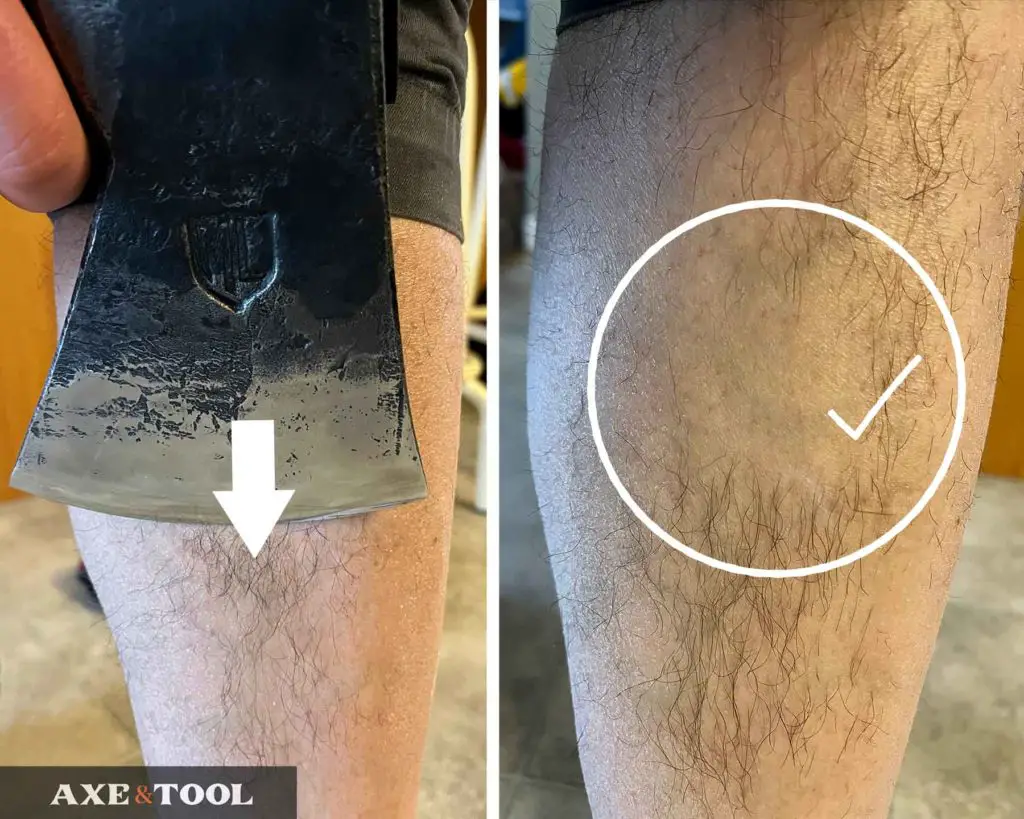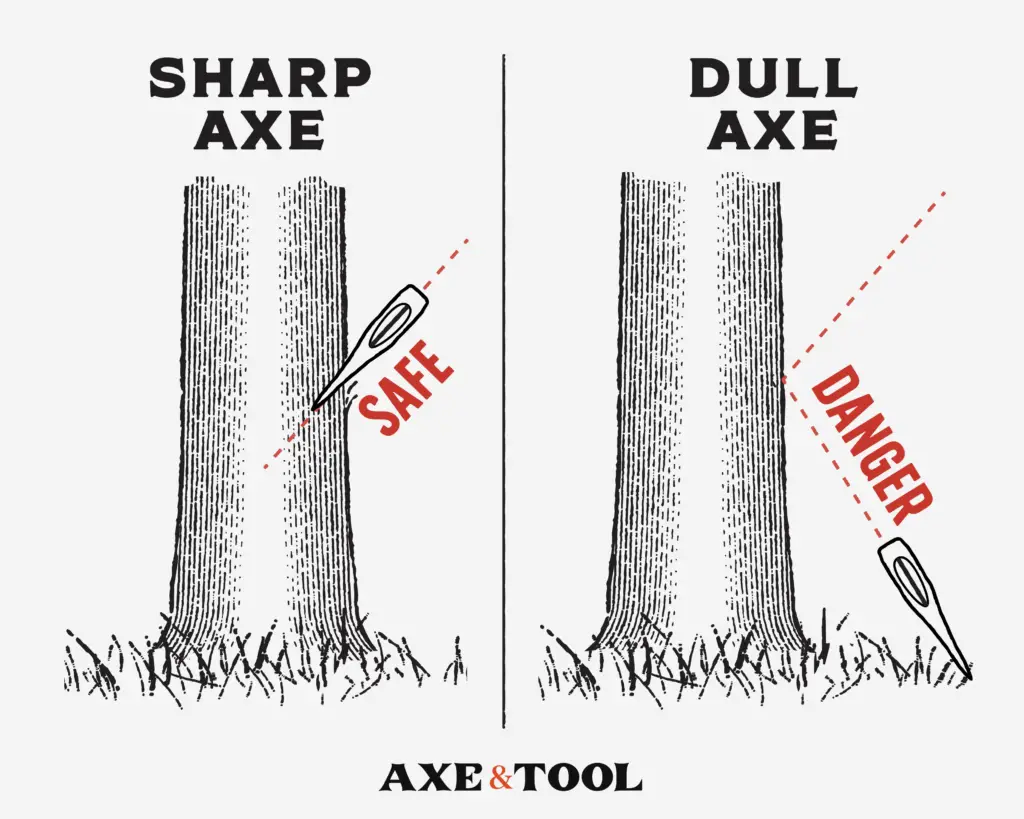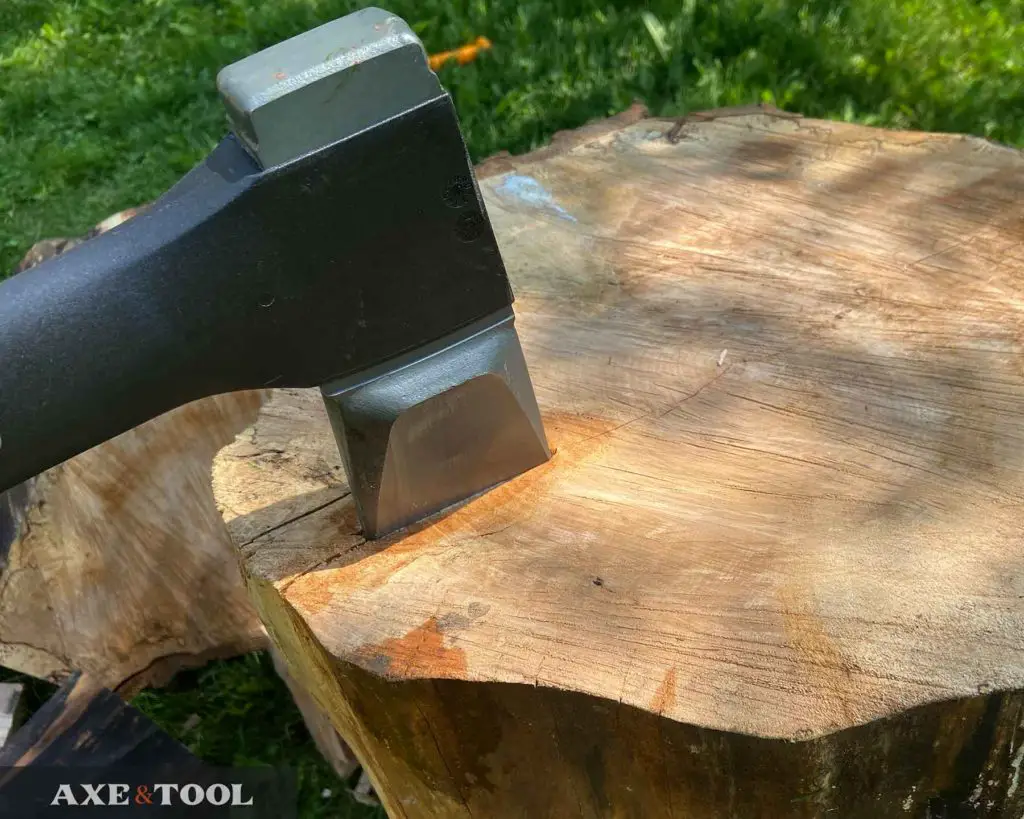Should Your Axe Be Shaving Sharp? (explained)

I watch a lot of axe stuff on Instagram and YouTube, and there are always guys shaving their arm hair, or slicing paper. But should an axe really be that sharp?
A sharp axe is more efficient and safer for felling, chopping, or limbing greenwood. A chopping axe should be as sharp as possible (shaving sharp). But for splitting or chopping dead wood, a very sharp axe can be too delicate. Either way, the edge profile is as important as its sharpness.
I have seen a lot online about making your axe “shaving sharp” without any discussion on if it makes sense for the task at hand. I have some axes that I keep shaving sharp for just the right occasion, and others that I just keep sharp enough.
Why do you want a shaving sharp axe?
Your axe should be as sharp as possible for chopping or limbing greenwood. It will make your work easier, more efficient, and safer.
Greenwood is live or recently cut wood that is still full of water, and quite soft. A sharp aggressive edge will cut right through the fibers and will allow your axe to drive deeper into the wood. Especially if the wood is fairly straight-grained and knot-free.
You can sometimes drive your axe in right up to the handle.
Deeper cuts mean fewer swings, which is more efficient. But it also means you need less power behind each swing to cut. You can focus on accuracy and maintain proper form for much longer without wearing yourself out.
You should not be making big full power swings, it’s less accurate and more likely to result in injury.
Why a sharp axe is a safe axe
While this might seem counterintuitive, a sharp axe will safely dig into the wood much easier reducing the chances for it ricocheting somewhere unexpected.
A dull axe can skip off a knot, or just bounce off because of poor technique. It can come back and hit you, or somewhere unintended.[1]

3 reasons your axe should NOT be shaving sharp
An axe should always be sharp, but not every task or situation requires an extremely sharp axe. In fact, it can even lead to axe damage.
The downside to a very sharp axe is that the tip will be more delicate, even on a well-profiled bit (blade). And some tasks are just harder on an axe, so you need a stronger edge. These axes can benefit from a stronger micro-bevel (more on that in the next section).
1. Splitting axes should be sharp but need a strong edge
Splitting axes should be sharp to easily penetrate the wood, but they don’t need to be shaving sharp.
You will be splitting with the grain, and driving through the log – so the head shape of the axe behind the edge is doing most of the work.
You can still use a very sharp axe if the wood is freshly cut – but it will be hard on your axe if you are splitting seasoned wood from a woodpile, or on a campsite. Firewood that is ready to burn has lost most of its moisture, leaving it quite hard.
Note: This is why you should split your wood as soon as possible after a tree is cut down, it will be much easier on you and your axe.

2. Dead and seasoned wood is hard on axes
Axes are primarily meant for chopping greenwood. Dead or seasoned wood has lost most of its moisture leaving it hard and unforgiving. It will quickly dull your axe and could damage a sharp aggressive bit.
A saw will be a better tool for this task, but if you are using an axe just know what to expect. Don’t use an axe with an extremely aggressive profile.
3. Limbing near the ground and roots
If you are chopping near the ground, and you think your might hit the dirt – you will want a stronger edge. The earth is full of rocks and debris, and even very small little pebbles can easily chip the cutting edge of an axe.
It is surprisingly easy to chip and break an axe working like this.
Giving your axe a sharp and strong profile
There is no point in spending the time to make your axe shaving sharp if the rest of the blade shape doesn’t properly support it. An improper profile can either undo all the benefits of sharpening.
1. Add a micro bevel to your axe for strength
Even on very aggressive and sharp axes, a small micro-bevel at the very tip will add strength and durability to the edge. This secondary bevel may only be a mm or 1/32 of an inch, but it will have a slightly wider angle that will help prevent the edge from rolling or chipping.

This would be a fairly aggressive angle for chopping but according to the US Forest Service “Ideally, the bevel should be about 18 degrees while the micro-bevel should be about 25 degrees“. [1]
Even though this micro-bevel is a wider angle, it is still very possible to make it shaving sharp (but it will likely take some practice). If you are just getting started, or need a slightly stronger tip for the work you are doing that micro-bevel can be made a little larger.
2. Shape the blade behind the cutting edge
Even the sharpest axe will have issues if the bevel and transitions are too thick or thin.
A sharp axe with a thick or abrupt transition from the bevel to the rest of the blade will perform like it wasn’t sharpened at all. The wide transition point will act as speed bumps that create drag almost immediately. It will not chop nearly as deep as it should.
The pronounced “speed bumps” also make an axe more likely to ricochet when chopping. Chopping is done at an angle and they can bounce off the tree before the edge has a chance to dig in.
Many new axes come like this with too wide a transition.
On the flip side, an axe with too thin a profile will likely chop quite deep but will be prone to sticking. It will also weaken the blade structure, creating more risks for chips or breaks.

The rounded (convex) shape of the transition re-enforces the tip and keeps it strong.
There are flat grind edges on some axes, but they tend to be for more specialized axes that want to focus on tasks like carving or shaping wood.
Please comment below If I missed something or if you have any questions. I do my best to respond to everyone.
About the author:
About the author:
Jim Bell | Site Creator
I’m just a guy who likes axes. I got tired of only finding crap websites, so I set out to build a better one myself.
I’m also on Instagram: @axeandtool
Resources:
[1]. US Department of Agriculture, Forest Services – Forest Service Ax Manual


